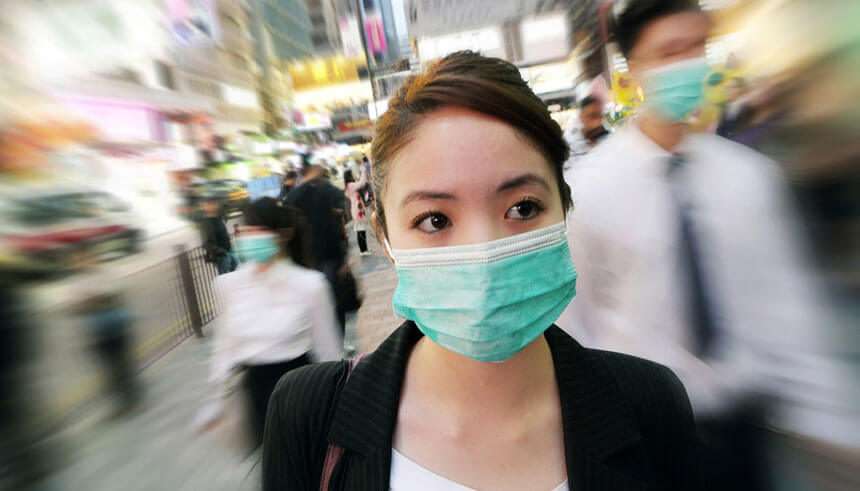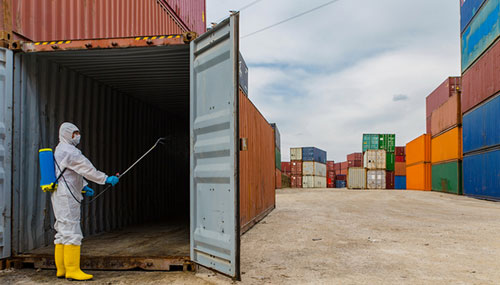U.S.-Asia Business
Back to Business: China’s Reboot in the Aftermath of COVID-19
By Melody Yuan

How businesses in China are returning to full operational capacity and what this means for the U.S.
Businesses around the world are gearing up to reopen incrementally as the spread of COVID-19 slows. While many employers and employees are eager to get back to work, doing so in the face of a “new normal” is complicated and full of unknowns. One country that has been cautiously moving forward and avoiding a catastrophic relapse of the pandemic is China.
After months of being in lockdown, it appears that China is finally seeing the light at the end of the tunnel. While small clusters of infections are still being reported in some cities, new cases of the coronavirus have slowed significantly, and Chinese citizens are venturing outside their homes, going back to work and waking the economy once again. The country announced the reopening of Wuhan in April, the city where the first known cases of coronavirus were detected. In April, Bloomberg Economics estimated that 90 to 95 percent of China’s workforce had reopened and industries have started to show signs of recovery.
A look at how post-virus China is reopening
From mandatory masks to communal surveillance and tracking, China is moving forward cautiously. High-tech tracking methods such as drones equipped with temperature scanners and facial recognition are now used regularly for citizens to enter offices, factories and even retail stores.
Along with more stringent monitoring practices, many parts of China are finally returning to a semblance of normalcy. Major brands such as Apple have reopened most stores, and Chinese smartphone maker Xiaomi has reported that 90 percent of their retail stores have reopened. Even 500 cinemas in major cities briefly reopened in late March until they shut their doors again due to fears of a second wave of the pandemic.
Industrial production for commodities such as oil and coal, which were flat during the pandemic’s peak, have picked up again. As businesses and factories have reopened, electricity demands have shot up, causing coal burns to double since the height of the lockdown in February.
Despite these promising signs, the Chinese economy is still far from a healthy revival. “What we’re seeing is that China has reopened, but their export demand is still very weak,” says Andrew Pan, senior vice president and head of China business and strategy at East West Bank. “So, China’s recovery is also going to be slower and in line with how the rest of the world recovers from the pandemic.”
Jerry Nickelsburg, senior economist and director of UCLA Anderson Forecast, agrees: “The world is going to be recovering more slowly than during the 2008 recession, so we’re going to see fairly muted exports coming out of China as we go forward.”

“The world is going to be recovering more slowly than during the 2008 recession, so we’re going to see fairly muted exports coming out of China as we go forward.”
State of affairs: U.S. and China
Part of the reason for China’s weak export demand can also be traced back to pre-COVID-19 days. Since 2018, Trump has imposed tariffs onto $550 billion worth of Chinese products, and U.S.-China trade tensions have continued to escalate amid fragile negotiations.
“After the implementation of phase one of the trade deal and the arrival of the pandemic, there was an increase in purchases of U.S. agricultural goods from China,” says Nickelsburg. “Typically, if you have increased demand for products such as soybeans, wheat and pork, you would expect that demand to generate increased prices. But commodity markets didn’t believe that was going to happen.” Nickelsburg thinks that the prices indicate the market’s lack of confidence that eased trade restrictions were going to last over the long run.
“In the short term, we’re going to see a lot of mudslinging over the origins of the coronavirus,” says Geoffrey Garrett, dean of The Wharton School at the University of Pennsylvania. “The end of 2021 is the deadline for the most important provision of the phase one trade deal: China’s commitment to buy $200 billion additional goods and services. That’s the next milestone in the evolution of China-U.S. relations.”
Both Garrett and Nickelsburg agree that China will not be able to meet this milestone. “No one really thinks it’s going to happen when we get past the pandemic,” says Nickelsburg. “And when trade starts opening up and the Made in China 2025 subsidies kick in to support state-owned enterprises competing with U.S. companies, things will start to look very different.”
The U.S. has also accelerated its efforts to take manufacturing and supply chains out of China and relocate them to what the administration considers friendlier nations. According to current and former government officials, tax incentives and potential re-shoring of subsidies are some of the measures being discussed. “These discussions are going to have serious impacts on the ability to get to phase two because there’s a real sense in the U.S. that supply chains shouldn’t be dependent upon China,” says Nickelsburg. “I don’t think we’re in a better position than we were back in January of this year.”
China adapts to look inward for a boost in domestic consumption
Given the uncertainty and political tension surrounding the world’s two largest economies, people are spending less in the wake of the pandemic and a volatile market. While the U.S. distributed stimulus checks to citizens and businesses nationwide, China issued billions of yuan in digital shopping coupons. According to the National Bureau of Statistics of China, consumer spending in China made up almost 58 percent of the nation’s GDP growth in 2019. With more Chinese citizens saving less and spending more, China hopes that consumer spending can help fill in the gaps.
In Wuhan alone, residents snatched up $4.2 million worth of WeChat coupons in a matter of minutes, and the coupons encouraged transactions worth 13 times their value on the first day of usage. WeChat coined the term “revenge spending” to describe the effect of consumers unleashing their pent up “purchasing power” post-pandemic. According to a report by Citic Securities, 34.9 billion yuan’s worth of coupons would boost consumption by 62.9 billion yuan. As of date, over 30 provinces and cities have handed out these coupons, and while individual coupon amounts are small, local governments are hoping to see a collective spike in spending for supermarkets, restaurants and even travel-related products and services.
To support companies impacted by the coronavirus, China’s banks have also reduced loan rates by the biggest amount in more than 5 years. The People’s Bank of China issued a statement pushing for concerted global macro policies with other nations and made a commitment to keep liquidity sufficient and watch for inflation risks. China’s 2020 median forecast for economic growth was lowered to 2.9 percent, a huge drop from 6.1 percent in 2019, marking the slowest rate of growth since 1976.
Learning from China’s reopening
“The unbridled movement to globalize our businesses and operations has really been killed off due to this pandemic,” says Nickelsburg. “Businesses have realized that they may have been tied too closely to another country, and there’s a real sense of wanting to be self-sufficient now.”
Nickelsburg sees China’s focus on boosting domestic consumption as an example of not depending on foreign market demands. “China’s export-led growth model has come to an end. Other countries that want to entice foreign businesses through low-cost labor are going to find it difficult to do so post-pandemic,” he continues.
Consumers in post-pandemic China also remain wary of going into crowded spaces, and online shopping—fueled by the digital coupons—has helped encourage domestic spending, for now. However, China’s GDP contraction, much like the rest of the world’s, means that industry instability, income loss and unemployment will influence how businesses and individuals decide to spend money. More fiscal stimulus from the government, lower interest rates from banks and even eased real estate regulations are expected to help keep China’s economy afloat.
“My advice to local businesses, after looking at the way China is coming out of their coronavirus crisis, is to really think about how this dynamic will change their business model,” says Pan. “Consumer behavior will undoubtedly change as a result of this pandemic, and you need to make sure that your business is able to capture and adapt to that shift.”
Nickelsburg believes that until a vaccine is officially developed and widely distributed, economies are unlikely to reach pre-pandemic levels of production and growth. “The severity of an impending recession depends on the severity of the pandemic,” he says. “We’re assuming that in the U.S., we’re on the backside of this as we get into the summer. Hopefully, we’ll have a vaccine by 2021, but there’s just no telling, and the impact of this pandemic could be much deeper than we’re forecasting.”

